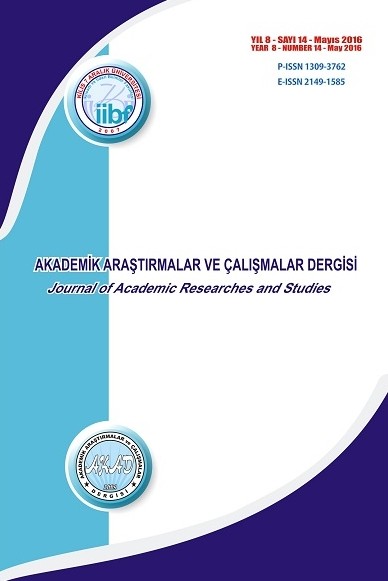THE ROLE OF ENTERPRISE RESOURCES PLANNING (ERP) IN REDUCING ENTERPRISE COST AND IMPROVING THE QUALITY "AN APPLIED STUDY ON THE SYRIAN FOOD COMPANIES"
ERP(Enterprise Resources Planning) –Improving- Cost-TQM
___
- Davenport, T.H., Putting the enterprise into the enterprise system, Harv. Bus. Rev., 1998,76, 121–131
- Glasgow, B., A view from a vendor: Oracle’s enterprise software built on a strong (data) base. Chem. Market Report., 2002, 262, 20.
- Scott, T. (2002), “Aligning your data collection and ERP implementation decisions”, IT Papers, available at: www.unova.com/whitepaper_align.asp
- Slater, D. (1999), “An ERP package for you . . . and you . . . and you . . . and even you”, CIO Magazine, issue: February,1999.
- White, B., J., Clark, D. and Ascarelli, S., Program of pain: This German software is complex,expensive—and wildly popular—SAP’s R/3 helps coordinate all aspects of business;installing is a nightmare—Why consultants are happy. Wall Street J. (Eastern Ed.),1997, A.1.
- Johnson, M., Market Orientation, 1998 (Prentice-Hall: Upper Saddle River, NJ, Stedman, C., Survey: ERP costs more than measurable ROI. Computerworld, 1999, 33, 6.
- Joachim, D., Child support.Netw.Comput., 2002, 13, 23, 34
- Wheatley, M., ERP training stinks. CIO, 2000, 13, 86
- Aladwani, A., `Change management strategies for successful ERP implementation’’, Business Process Management Journal, Vol. 7 No. 3, 2001 pp. 269.
- Ettlie, J., The adoption of enterprise resource planning systems, in Responsive Production and the agile enterprise, Proceedings of the 4th International Conference on Managing innovative Manufacturing, University of Aston, 2000.
- Al-Mashari, M. and Zairi, M. (2000), ``Information and business process equality: the case of SAP R/3 implementation’’, Electronic Journal on Information
- (http://www.unimas.my/fit/roger/EJISDC/EJISDC.htm)
- Aladwani, A. (1998), ``Coping with users resistance to new technology implementation: an interdisciplinary perspective’’, Proceedings of the 9th IRMA Conference, Boston, MA, 17-20 May, pp. 54-9.
- Aladwani, A. (1999), ``Implications of some of the recent improvement philosophies for the management of the information systems organization’’, Industrial Management & Data Systems, Vol. 99 No. 1, pp. 33-9.
- Davenport, T.H. (1998), “Putting the enterprise into the enterprise system”, Harvard Business Review, pp. 121-31.
- Davenport, T.H. (2000), Mission Critical: Realizing the Promise of Enterprise Systems, Harvard Business School Press, Boston, MA.
- Kumar, K. and Van Hillegersberg, J. (2000) , " ERP experiences and evolution", communication of the ACM, April, VOL.43 No. 4, pp. 22
- ComputerWorld (2001), “Why ERP projects cause panic attacks”, 24 September.
- Boersma , keen and Kingma, Sytze , "Developing a cultural perspective on ERP" , Business Process Management Journal, Vol. 11 No. 2, 2005 pp. 126 19- Chow Yang, Ching , " A study on applying FMEA to improving ERP ntroduction", International Journal of Quality & Reliability Management, Vol. 23 No. 3, 2006 pp.301 in Developing Countries, Vol. 2
- ISSN: 1309-3762
- Yayın Aralığı: Yılda 2 Sayı
- Başlangıç: 2009
- Yayıncı: Kilis 7 Aralık Üniversitesi
Mohammad AL-KACHROUM, Riyad Mnla MOHAMMAD, Sandra AL-AZWAR
HEMŞİRELERDE KURUM VE YÖNETİMİN ETKİSİNE BAĞLI OLARAK YAŞANAN MOBBİNG DAVRANIŞLARI
TÜRKİYE’DE UYGULANAN DÖVİZ KURU SİSTEMLERİNİN DIŞ TİCARET İLE İLİŞKİSİ
C. Erdem HEPAKTAN, Serkan ÇINAR, Özlem DÜNDAR
TÜRKİYE’DE DIŞ TİCARET-SANAYİ ÜRETİM İNDEKSİ İLİŞKİSİNİN ARAŞTIRILMASI (1990-2010)
PARA POLİTİKASINDA ŞEFFAFLIK UYGULAMALARI: ÇEŞİTLİ ÜLKE ve TÜRKİYE DENEYİMLERİ
HALKIN TOPLUM DESTEKLİ POLİSLİK HİZMETLERİNE YÖNELİK ALGILAMALARI: ÇANAKKALE İLİ ÖRNEĞİ
Mehmet MARANGOZ, Hale ÇELİKKAN, Çağla YAVUZ
KÜRESELLEŞEN DÜNYADA TURİZM SEKTÖRÜ: BİLGİ İLETİŞİM TEKNOLOJİLERİ VE REKABET GÜCÜ
